















































































































On April 12, 2019, Tennessee State University celebrated former TSU players who made it to the pros and the Super Bowl.



Cynthia P. spent 30 years working for a carnival and just wants to make you smile. Oh and she has a cat named Mischief.


vendors have drawn footballs, faces, flowers and crosses. And they've written about the Bible, Homelessness, and Shame

"I read the newspaper cover to cover each time it is published." — Frenchie F. FROM A READER New vendor training 10:30 a.m. every Wednesday at Downtown Presbyterian Church, 154 5th Ave N. and 10:30 Thursday Room in the Inn, 705 Drexel St. Next vendor meeting May 8th DPC 9 a.m. WANT TO BE A VENDOR?





Contributor Board
Cathy Jennings, Chair Tom Wills, Bruce Doeg, Demetria Kalodimos, Ann Bourland
Linda Bailey
• Amanda Haggard • Tom Wills • Barbara Womack • Ridley Wills II
• Lindsey Krinks • Betsy Phillips • David "Clinecasso" C. • Jordan Conover • Alvine
• Joe Nolan • Jason Cohen • Jennifer A. • Vicky B. • Cynthia P. • Harold B. • Julie B. • Maurice B. • John H. • Mr. Mysterio • Wayne Walden • Mary B.






Cathy Jennings • Tom Wills • Joe First
• Andy Shapiro • Michael Reilly • Ann Bourland • Patti George • Linda Miller •
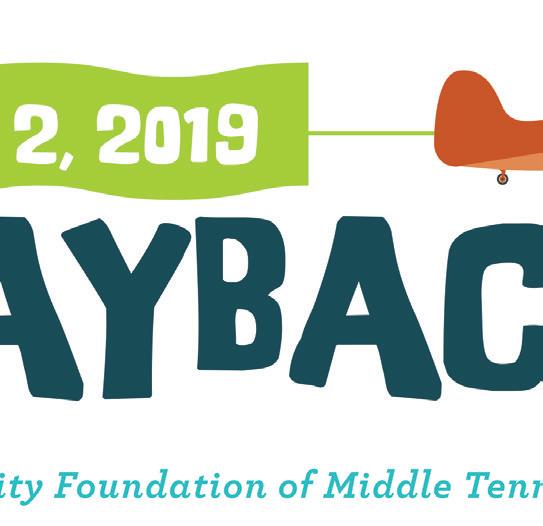
Deborah Narrigan • John Jennings • Barbara Womack • Colleen Kelly • Janet Kerwood • Logan Ebel • Christing Doeg • Laura Birdsall
• Nancy Kirkland • Mary Smith • Andrew Smith • Ellen Fletcher • Anna Katherine Hollingsworth • Michael Chavarria
Cathy Jennings Executive Director
Editorials and features in The Contributor are the perspectives of the authors. Submissions of news, opinion, fiction, art and poetry are welcomed. The Contributor reserves the right to edit any submissions. The Contributor cannot and will not endorse any political candidate.

Submissions may be emailed to: editorial@thecontributor.org
Mailng Address
The Contributor P.O. Box 332023, Nashville, TN 37203
Editor’s Office: 615.499.6826 Vendor Office: 615.829.6829
Proud Member of:




Printed at:
Follow The Contributor:
Copyright © 2018 The Contributor, Inc. All rights reserved.

Local
ActivismAndrew Krinks Editor Emeritus Will Connelly, Tasha F. Lemley, Steven Samra, and Tom WIlls Contributor Co-Founders
 BY TOM WILLS, CO-FOUNDER
BY TOM WILLS, CO-FOUNDER
The paper you just paid for was bought by someone else first, otherwise it wouldn’t exist. That’s how The Contributor works. A vendor who experienced homelessness paid 50 cents for this paper and then sold it to you. By buying it and taking it with you, you’ve just encouraged that vendor to buy another. BOOM! That’s the solution. Now keep reading. This paper has something to say to you.

Street papers provide income for the homeless and initiate a conversation about homelessness and poverty. In 2007, The Contributor founders met at the Nashville Public Library downtown to form one. In a strike of lightning we named it The Contributor to infer that our vendors were “contributors to society,” while their customers could contribute to their work. But, thunder from lighting is always delayed …
It took three years, but Nashville embraced us like no other city in the world. The Contributor became the largest selling street paper per-capita on the globe. And today 50 percent of our six months or longer tenured vendors have found housing. BOOM! The thunder has struck.

The Contributor is a different kind of nonprofit social enterprise. We don’t serve meals or provide emergency shelter. We don’t hire people in poverty to create products or provide a service. Rather, we sell newspapers to homeless people who work for themselves. We train them to sell those papers to you, keep the money they earn, and buy more when they need to replace their stock.
Our biggest fans don’t always get this. Like lightning without the thunder, they see the humanity of the vendor but misunderstand the model. Case in point: In 2013 during a funding crunch, a representative of one of Nashville’s biggest foundations exclaimed, “I’m such a big fan that I never take the paper!” We responded, “Well, that’s why we are in a funding crunch.” BOOM! Thunder was heard. Taking the paper makes our model work — not taking it breaks it. And selling the paper twice doesn’t just fund the paper, it funds housing and change. BOOM! Our vendors report their sales to qualify for subsidized housing and even for standard housing deposits and mortgages. They don’t consider your buying the paper a “donation.” It is a sale. When they sell out, they buy more and build the paper trail of a profitable business. Until making these sales, many of our vendors had never experienced the satisfaction of seeing their investment pay off. And when it does, it liberates! They have become “contributors” to their own destiny. And Nashville has become a city of lightning and thunder. BOOM! Now that you are a SUPPORTER , become an ADVOCATE or a MULTIPLIER You are already a SUPPORTER because you know that taking the paper makes the model work. You bought the paper and you are reading it. Now your vendor is one copy closer to selling out, which is exciting! Now you can become an ADVOCATE when you introduce your friends to your favorite vendor, follow us and share our content on social media, contact us when you witness a vendor in distress or acting out of character, or explain why others should pick up a copy and always take the paper when they support a vendor. And, you can become a MULTIPLIER when you advocate for us AND directly donate to us or become an advertiser or sponsor of The Contributor. Our income stream is made of 50-cent- at-a-time purchases made from our vendors, matched by contributions, ad sales and sponsorships from multipliers like you. Because our vendors are business owners, your donations are seed-money investments in their businesses and multiply in their pockets. Every donated dollar multiplies four-to-seven times as profits in the pockets of our vendors. Thanks for contributing.
El periódico que usted acaba de pagar fue primeramente comprado por alguien mas, de otra manera no existiría. Así es como funciona The Contributor. Un vendedor que está sin hogar pagó 50 centavos por este periódico y después se lo vendió a usted. Al comprarlo y llevarlo con usted, usted animo a este vendedor a comprar otro. BOOM! Esa es la solución. Ahora continúe leyendo. Este periódico tiene algo que decirle. Los periódicos vendidos en la calle proveen ingresos para las personas sin hogar e inicia una conversación sobre lo que es la falta de vivienda y la pobreza. En el 2007, los fundadores de The Contributor se reunieron en una librería pública en Nashville para formar uno. Y como golpe de un rayo, le llamamos The Contributor para dar a entender que nuestros vendedores eran “contribuidores para la sociedad,” mientras que los consumidores podrían contribuir a su trabajo. Pero, el trueno siempre tarda más que el rayo. Nos llevó tres años, pero Nashville nos acogió como ninguna otra ciudad en el mundo. The Contributor se volvió uno de los periódicos de calle más vendido en el globo. Y hoy el 50 por ciento de nuestros seis meses o más de nuestros vendedores titulares han encontrado casa. BOOM! Ha llegado el trueno.
JENNINGSThe Contributor es una empresa social sin fines de lucro muy diferente. Nosotros no servimos comida or proveemos alojo de emergencia. No contratamos gente en pobreza para crear productos or proveer un servicio. En vez, nosotros vendemos periódicos a las personas sin hogar para que ellos trabajen por ellos mismos. Nosotros los entrenamos como vendedores, ellos se quedan el dinero que se ganan, y ellos pueden comprar más cuando necesiten reabastecer su inventario.
Nuestros mas grandes aficionados no entienden esto. Como un rayo sin trueno, ellos ven la humanidad de el vendedor pero no comprenden el modelo. Un ejemplo: En el 2013 durante un evento de recaudación de fondos, uno de los representantes de una de las fundaciones más grandes de Nashville, exclamó: “Soy un gran aficionado, y es por eso que nunca me llevo el periódico.” Al cual nosotros respondimos: “Y es por esa razón por la cual estamos recaudando fondos.” BOOM! Y se escuchó el trueno! El pagar por el periódico y llevárselo hace que nuestro sistema funcione, el no llevarse el periódico rompe nuestro sistema. Y el vender el papel dos veces no da fondos para el periódico, pero da fondos para casas y causa cambio. BOOM! Nuestros vendedores reportan sus ventas para calificar para alojamiento subvencionado y hasta para una casa regular, depósitos e hipotecas. Ellos no consideran el que usted compre el periódico como una “contribución” pero más lo consideran como una venta.
Cuando se les acaba, ellos compran mas y asi logran establecer un negocio rentable. Hasta que lograron hacer estas ventas, muchos de nuestros vendedores nunca habían experimentado el placer de ver una inversión generar ganancias. Y cuando logran hacer esto, da un sentido de Liberación! Ellos se han vuelto contribuidores de su propio destino, y Nashville la ciudad de el trueno y el rayo. BOOM!
Ahora que te has vuelto nuestro SEGUIDOR, vuelve te en un ABOGADO o un MULTIPLICADOR. Ya eres nuestro SEGUIDOR, porque sabes que al llevarte este periódico sabes que esto hace que nuestro modelo funcione. Compraste el papel y lo estas leyendo. Ahora nuestro vendedor está a una copia más cerca de venderlos todos. Que emoción!
Ahora que te has vuelto nuestro ABOGADO cuando presentes a tus amigos a tu vendedor favorito, siguenos y comparte nuestro contenido en social media, contactanos cuando seas testigo de un vendedor actuando de manera extraña o fuera de carácter. O explicale a tus amigos porque ellos deben de llevarse el periódico cuando ayuden a un vendedor.
Te puedes volver un MULTIPLICADOR cuando abogues por nosotros, Y directamente dones a nosotros o te vuelvas un anunciador o patrocinador de The Contributor. Nuestra fuente de ingresos consiste en ventas de 50 centavos hechas por nuestros vendedores, igualadas por contribuciones, venta de anuncios, y patrocinios de multiplicadores como usted. Porque nuestros vendedores son dueños de negocios, las donaciones que den son dinero que es invertido y multiplicado en sus bolsas. Cada dólar donado se multiplica de cuatro a siete veces en la bolsa de nuestros vendedores. Gracias por Contribuir.
On April 12, 2019, Tennessee State University celebrated former TSU players who made it to the pros and the Super Bowl.
The Salute to Greatness-Excellence on the Gridiron took place at the Renaissance Nashville Hotel downtown with a reception and dinner followed by a program. The emcee of the program was legendary and award winning sportscaster Hope Hines.
"This is a great honor for me to come here tonight to honor these guys who have brought so much fame and glory to TSU," Hines said. "This is a great night for TSU and for Nashville. It is these guys and their performances in the NFL that have made TSU Football synonymous with the NFL."
The Honorary co-chairs of this event were Ed "Too Tall" Jones of the Dallas Cowboys, Super Bowl Champ Dominique Rodgers-Cromartie and Pro-Football Hall of Fame Inductee Richard Dent. Hines began his interview by asking Jones how he got his nickname.
"First of all I would like to say that this event is more than just an assemblage of former players, it is an opportunity for us to come back to see our brothers — we all kinda grew up together at TSU,” Jones said. “As for my nickname, when I went to pick up my first TSU football uniform, the pants were supposed to fit at the knee, my pants were way above the knee and when one of the others players saw that, he said, ‘man you are too tall to play football’ and I have been ‘Too Tall’ every since.”
Howard Gentry spoke about the many TSU football coaches like John Merritt, Howard Gentry, Sr. and Joe Gilliam, Sr.
“These were the greatest and they had the greatest im -
pact on our players," Gentry said. George Balthazar said he played football at TSU before players wore face masks.
"You could always tell the football players on campus because most had missing teeth," Bathazar said.

There were more than 50 former TSU football players and their families in attendance, but who were not recognized including Claude Brumfield of the New York Giants, Larry Mallory of the New York Giants, Robert Woods of the Washington Redskins, Randy Fuller of the Atlanta Falcons, Al Davis of the Philadelphia Eagles, Sonny Lyons of the Minnesota Vikings and Nathaniel Brown of the Minnesota Vikings.
"This is like a welcome home celebration that enables us who have not seen each other in many years to come together and reminisce about the good ole days at TSU,” Brown said. “It is great to see the fellows that I played with and went through blood, sweat and tears with. As a whole this is a great event and I look forward to attending next year as it brought back great memories. Kudos to Hope Hines for doing an excellent job of emceeing this event and to the TSU organizers. We were all excited to see each other again,” Brown said.
Nashville Mayor David Briley sent a message of congratulations: "It is clear friendships made and retained over the years, as well as the special character of TSU, remain today in the hearts of its faithful alumni members. On behalf of the citizens of Nashville, best wishes for a memorable evening of remembrance and fellowship."
WE’RE HONORED TO SUPPORT THE CONTRIBUTOR AND TO CHAMPION GOOD NEWS IN NASHVILLE.
 BY JORDAN CONOVER
BY JORDAN CONOVER
“This is a sanctuary, and you belong here,” said Deen Entsminger, Belmont University Professor of Music. At first, I didn’t know how to respond. All I wanted was to tell him that my financial aid had fallen through, and that I was required to drop all my classes. But it was two weeks into the semester and in Deen’s mind, I was already part of the Chamber Singers family. Many get to know the fun loving side of Deen Entsminger, but as soon as he spoke those words to me, I started to see his true character. The chamber choir circle, while under his stewardship, is a place of refuge from the storms of life. It is a place where the students are not only a member of a choir, but they are part of the family. Knowing, seeing, experiencing all of this leads everyone to assume that this is how it’s always been. But as I sat down with Entsminger, he took me on his personal journey of redemption.
My mom and dad always had records of all the great singers. I’d learn these songs because I’d go over and pick them up and start over again. Then in 6th grade, Mr. Wymm Price, just before lunch or recess, would bring out his battered old guitar and just start singing. He didn’t require anything of us, he would just sing. And when there was a refrain, he'd say, ‘Sing along if you want.’ And so, I began to learn musical form. And he had a face on him like he really liked it! I had not seen that before because I've been listening to records. And sometimes on TV you'd see somebody performing, but it's back in the day with a black and white set and it has bad reception. But this man was standing right in front of us and he liked what he was doing! He was expressing himself and it made him happy. And I thought, ‘This is making me happy!’ So, I joined in.
Well no, we didn’t have a choir in middle school. That wouldn’t happen until the 8th grade.
did
Oh, how sweet. June of 1966, I was 16 years old. My choir director tells me that there’s a week-long choral camp in Virginia and that I needed to go. So, I’m sitting in my place [at camp] and up on the stage walks our conductor. What was so remarkable about this man was his hands. He was sim -
ply getting us to sing by waving his hands!
I’d never seen that before. My high school choral director conducted us from the piano. His hands were always on the keyboard, so he nodded at us to come in. And there it was. I'm 16. I'm looking at this man. And I went, ‘I want to do that.’ I couldn’t recover from that. I'm getting emotional right now, just remembering Paul Salamunovich. One of the great choral conductors of the time.
Tell me about some of the challenges when first starting your career.
First thing out of the bat was being angry. After graduating from college, I got a job as a choral director of a high school in Richmond, Va. I had gone to a conservatory of music and woo, it's a big deal when you're at a conservatory. I graduated with maybe more problems about my need to share myself with others. I wasn't a teacher,
I was choral director, and I was a good one. And I wanted people to know that.
I had impatience for the time it took a group of kids to learn something and I'd get angry at them. The next time they took a pass at it, they sang a little more quietly. I go, ‘Hey! Come on, come on!’ I had raised my voice. Well, when I raise my voice, their voices diminish.
One time I looked up and I saw some sopranos talking and they were over to my left and I just, I took my hand and slammed the piano. I hurt my hand so badly, but I was really ready to make a point. I slammed the piano. I just pointed at them and I said, ‘What are you doing? You're wasting time in here! You're talking while I'm trying to do work!’ One of the sopranos sheepishly said, ‘Mr. Entsminger, we were having a problem with page seven and we were trying to go over that part.’ They were talking about the music and I, I got mad at them. I had to change my behavior quickly.
The metaphor is I'm up on a pedestal, not that they’d built, I built it. I was so far away from them that they could not appreciate what I was doing. I wasn't letting them appreciate it. I was controlling their responses. And at some point, they just decided to either quit or bring me down. And some of them who were really interested stuck around. They just toppled me. I came crashing down right into the room with them.
I was so young, I didn't realize that this was a shared experience. I was thinking it was all about me. And the moment I realized it didn't have to be, that’s when I returned to my child-like state. I had to start over and be vulnerable. I had to [tell myself] that ‘the very people with whom you are being vulnerable have already been vulnerable to you. They've already joined you. They're in.’
And I realized they wanted to know why the music was that beautiful. So, I'd spend the rest of my young life building the vocabulary to tell them why something was so magnificent. And the moment I did, oh my gosh, the ensemble began to throw their heads back. I don't mean that literally because that's not a good vocal posture, but I'm going back to what Mr. Price did. His head would rise up and then he'd sing that loud note. Well, my choir began to do that too now that they wanted to, because I'd learned to invite them.
Turning Point is a new series in The Contributor that focuses on the moments where people’s lives were changed.
During the federal occupation of Nashville from February 25, 1862, until the end of the Civil War in 1865, there were thousands of federal soldiers stationed in Nashville who were living in tents, many on the west side of town and between Edgefield and the Cumberland River to the east side. These soldiers cut down thousands of trees and disassembled nearly all the fence rails in the county to warm themselves by camp fires. Other trees and rail fences were harvested to fuel the Federal steamboats that brought soldiers and supplies to the occupied city. The Elliston Plantation west of town was said to have only two trees still standing at the end of the war. One was in the middle of today’s Louise Avenue just north of Elliston Place.
County plantations were also devastated. An example was Rosemont, the home of Mary McGavock Southall on the Murfreesboro Turnpike at Mill Creek. Mary, whose husband was deceased, left her plantation soon after federal forces occupied her land early in 1862. In poor health, she and her son, Randal, moved to Belle Meade, the home of her sister Elizabeth McGavock Harding where Mary was bedridden with rheumatism. On June 17, 1862, she roused herself enough to ride in a carriage with Elizabeth to Rosemont. She found that the occupying federal soldiers had recently left. The house was, they discovered, a wreck. Outside, fruit trees, shrubbery and some hardwood trees had been cut down and left to rot in the front yard. Wartime photographs from 1865 show Nashville to be almost entirely without trees, a loss that took years to remedy.
Late in the 19th century, there were three great areas of timber in the United States. One was the evergreen forests on the West Coast. The second was the extensive yellow pine and cypress forests of the Gulf Coast. The third was the great hardwood forests that ranged from the eastern slopes of the Appalachian Mountains to Central Arkansas and from the Ohio River to south of the Tennessee Valley. Nashville was located at the center of this hardwood area, and for more than 25 years, was the leading hardwood lumber producing center in the country. Before railroads penetrated the Upper Cumberland Plateau, logs were cut down by farmers in rural areas including Overton County, often “snaked down” winter hillside by mules to the closest good sized creek. On a rise or by dynamiting damned up streams, the logs painfully
floated to the Caney Fork, Obey or the South Fork of the Cumberland to eventually reach the Cumberland where they were assembled into rafts and floated to Nashville where they lined the east bank of the Cumberland River for several miles.
In 1967, when my wife and I moved to Warner Pace, a neighbor was 87-year-old Thomas E. Webb Jr. He told me that when he was a boy he walked on rafts all the way from where Shelby Park is today to town. Cordell Hull made his first trip to Nashville as an oarsman on his father’s raft. Most rafters on the upper Cumberland would go to a tavern when they reached Nashville and spend most of their money on whiskey before returning home, once again broke, on the Tennessee Central. Cordell went to a bookstore and bought his first book.
By 1908, Nashville boasted 13 sawmill plants, with a total output of lumber exceeding 80 million feet per annum. In addition to the saw mills, Nashville had a veneer factory, a big hardwood flooring plant, three furniture factories, two big trunk factories, two spoke and handle plants and numerous other wood-working establishments.
It was not long, however, before Middle Tennessee’s original growth of hardwood trees was virtually destroyed. Today a small remnant of original growth hardwoods are in the newly-opened section of Percy Warner Park between State Highway 100 and U.S. Highway 70.
One day in about 1925, an automobile ran into the large hardwood tree standing in the middle of Louise Avenue between my grandfather’s house at 217 Louise Avenue (now Jimmy Kelly’s Restaurant) and Elliston Place. This was said to be one of the two trees on the Elliston Plantation that survived the Civil War. There was an outcry to tear the tree down as a safety hazard, but a small core of preservationists in Nashville, including Chancellor James Kirkland of Vanderbilt, managed to save the tree until the 1940s. About this time, historian Stanley Horn was planting trees on his lawn on Bowling Avenue. Before he died, Mr. Horn had planted in his yard every hardwood tree that was indigenous to Middle Tennessee. My father, Jesse Wills, also loved trees and planted unusual ones, including a fringe tree and a Japanese dogwood, in his yard at 1201 Belle Meade Boulevard. One of my favorites there was a cypress tree, now large, that he transplanted from the Tennessee River bottoms west of Nashvile. When I was growing up at my parents’ home, Meade Haven, in the 1940s, there
were two lines of hackberries paralleling Belle Meade Boulevard on the western edge of the 70-acre field that separated Belle Meade Boulevard from Chickering Road. I remember people riding horses, some rented from the stable at the Percy Warner Golf Course, between the lines of hackberries. One story is that Union cavalrymen inadvertently brought hackberries to Middle Tennessee in the digestive systems of the thousands of mules that accompanied their armies.
I love trees, particularly Sugar Maples, and enjoy seeing them leaf out every spring. When I lived at Meeting of the Waters in Williamson County, we had an aged Catawba tree in our front yard. In 1990 I got the bright idea to pull off the ropethick poison ivy vine that grew almost to its top. Helping me was Andy Dailey, a Vanderbilt student who lived there while our son, Ridley III, was restoring the house. Although I never caught poison ivy before or since, I did that time. So did Andy.
A few years ago, my brother, Matt, who has a special love for Southern Sugar Maples, sent me one from a tree nursery. It is growing in my front yard in the Monteagle Sunday School Assembly. Matt has growing in his yard in Colorado Springs one or more Southern Sugar Maples, two Northern Sugar Maples, 17 Western Sugar Maples, five Vine Maples, a John Pair Caddo Sugar Maple, two Red Maples, including one more than 50 feet tall, a Rocky Mountain Maple, a low-growing Japanese Maple, and an Amun Maple from Siberia.
I’m particularly appreciative of the Nashville Tree Foundation founded in 1986 by the late Betty Brown. It does great work in planting trees, educating the public on trees, identifying the oldest and largest trees in Davidson County, and designating arboretums. At Glen Leven, the antebellum home of the Land Trust For Tennessee on Franklin Road, there are an incredible number of the Tree Foundation’s Big Tree Contest winners, including a Black Cherry, a Southern Magnolia, and a trifoliate Orange tree that I nominated in 2013. Annually, it produces sour oranges the size of lemons.
Everyone who loves trees should stroll down the tree trail along the Cumberland River downtown established several years ago by the Nashville Tree Foundation in memory of Betty Brown. Before closing, I would like to recognize Hiroshi Sato, the former Japanese Consulate General in Nashville. In 2012, he began planting Japanese Cherries, particularly along Hillsboro Road. They have been beautiful this spring.
The first time I met Cynthia she approached me after a new paper release meeting with a notebook full of artwork. Using pen and a little highlighter, she draws brightly colored hearts filled with crosses and flames. My favorite piece, though, was a smiling clown with the phrase “Don’t worry, be happy” written neatly underneath. I didn’t realize until two weeks later when we sat down to do her vendor spotlight, but that picture pretty much sums up Cynthia’s vibe perfectly. She speaks in an even, confident tone about everything and really just wants us all to take care of each other. (Flip to page 14 to see some of her artwork!)
Since 2013. Kind of off and on until 2017. Back in 2013 I’d sell for three months and then go off for nine months to work for the carnival.
Well obviously I have a million questions about what it’s like working for a carnival.
It’s crazy! I was the foreman over roller coasters and kiddy rides.
The carnival I worked for had a special needs day and anyone with special needs can come in and they get to ride the rides for free that day. I loved it.
Even though the work setting up was grueling work, when we would open and I got to watch those kids walk in and see all the lights, I even forgot about hitting my fingers with a hammer. Just seeing the look in the kids’ eyes was the most amazing part of the entire thing. I stuck with it for 30 years because watching the kids get out there with their mom and dad and brothers and sisters having a ball was worth it.
Oh yes. I’ve been all over the United States. It was fun. I got to spend time teaching other people how to set up a ride, how to maintenance it and take care of it and clean it and fix any problems there was with it. For a 7th grade drop out, I got a lot of chances to teach a lot of people a lot of stuff. And in a way I’m still teaching people sometimes.
but look, I live in a camp in the woods, sleep in a hammock through the summer, I make what I make on the papers, and I got a home. I’m living off the grid right now. Basically to me this is an extended vacation. I worked thirty years of my life and didn’t have a vacation now I’m getting a vacation, and I’m kind of being greedy with it! And I’m enjoying it. I worked everyday since I was 16 years old and I was a mother at 14, I haven’t had much of a life of being a kid and now at 50, I
How important are your pets to you?
Very important. They’re my constant companions. My cat Mischief, is spoiled rotten.
That’s a great name for a cat!
She earned it! My dog, Sparky, he’s Welsh Corgi and Australian Blue Heeler mixed. He’s a little short fella. He’s spoiled rotten. Then there’s Tinkerbell, the gray calico. She’s gray, orange, and white but mostly gray. Both of the cats do a lot of hunting, but when I lay in my hammock, Mischief insists on being up there with me.
The way I got my camp set up, it looks more like a Native American longhouse. I cook right on the fire. I got pots and pans and a cowboy coffee pot. I have a shower tent with a 5-gallon camp shower and I catch rain water when it rains. And I wash my clothes with it and use it for the shower and for the animals.
My grandpa on my dad’s side is full-blooded Native American and I kind of grew up with my grandpa and grannie. I’m the eighth child out of eleven and I was born with knee issues. Both of my parents needed to work, so I grew up around my grandpa and he took me out and taught me how to live in the woods. He was like, you’re gonna learn something. I had a pretty good life. Then I got pregnant and had my four kids, which they were wonderful, they still are wonderful. They are grown, thank God! I don’t if I can handle little kids anymore. When I left the carnival, it’s because I had the stroke and I fell three stories off of one of the roller coasters I had a harness on, but when I fell I hit the second track. I busted my head and one of my eyes is messed up. But I deal with it. I work. I’m still happy.
It’s God. That’s all I can say. I got a book I read with my Bible. It’s called Jesus Calling. A lady wrote it who was going through hard times in her life.
BY LINDA BAILEYA lot of people will ask me, “Well why don’t you get a real job and stop selling The Contributor ?” And I tell them this is a real job and I own this business.
And, I study the Bible. In the morning I get up and I’m in it before I go to bed. A lot of people I’m teaching them about God, letting them know to get him in your life and stay in his presence and keep being with him and he makes life so much easier. A lot of people think you have to have a four-wall house, a big car, and all this money and everything
getting that chance of being a kid and enjoying life, ya know?
I enjoy life, I enjoy what God’s given me. I’m not being tortured, I’m not homeless because I’m on drugs or an alcoholic or anything like that. I had a stroke and I struggled so I went through my savings. Now, I’m getting back up on my feet and doing what I can do. It’s kind of hard to get a place because I have a dog and two cats. Community Pet Center on Trinity Lane is wonderful for helping homeless people take care of their animals. When I go and get them their new shots and everything I try to donate $5 to them and it helps them out too.
Where I sell at the McDonalds in Inglewood, a lot of the people it’s early in the morning, or it’s lunch time and they’re in a rush to get back to work and they don’t smile much. So I made a sign to hold with my papers and all it says is, “Smile a smile and while you’re smiling another smile.” And I saw a lot of smiles yesterday. I made more smiles than I did money yesterday, ha! A lot of people pull up and say they don’t have money with them, but I say just your smile makes my whole day. A lot of people will do everything they can not to look at me. And I just looked up at God and said, I guess I’m invisible except for your people. A lot of people don’t see me. Even if you don’t buy the paper, I at least appreciate a smile or a wave.
Technically that’s why we’re all here is to help each other. When we’re not helping each other out we get miserable.

As so many people have noted, the destruction of the cherry trees wasn't just about the trees. It was about how alienated so many people in Nashville feel from their own city. It feels like there’s so much that we are constantly being required to do without so that tourists stay happy. We're paying for a water park we'll have to pay a private entity to use. Most of Rose Park — a public park — is commandeered by Belmont, making it off-limits to Nashvillians. We almost lost Fort Negley. We're still fighting about whether we should give the park in front of the downtown library
to a developer for way under market value. And we're losing the use of our downtown for the whole length of the NFL draft.

I resent being impressed into being the "local color," an extra on the stage set that is "Nashville." I resent having my money spent on things I can't enjoy because it's supposed to be good for the city, when that goodness never seems to trickle down to me. I'm not alone, I know.
But the part about this whole thing that shames me is that I, like a lot of other Nashvillians, have been conditioned to accept that the city isn't really for some of
us. Many sat by while tent cities were torn down, while people were removed from Fort Negley — a place famous among other things for being a home to people who didn't have any other homes. I've shrugged it off when people were gentrified out of their neighborhoods — after all, why didn't they ever buy? And I know better. I know, intellectually, all of the reasons people don't own homes. I still accepted that, even if it wasn't fair, it's the price of progress. I don't think I'm alone in that, either. Why did the cherry trees sting? Because it was a bunch of us who as-
sumed we were safe finding out that our feelings and our well-being are also considered expendable by the powers-that be. There are folks who sacrifice for It City and folks who benefit from It City and it turns out a lot more of us are in the first category than we realized. That's a hard lesson, but we can't change things until we learn it.
Betsy Phillips is a longtime local writer who focuses on everything from politics to parks to ghosts to Dwayne “Th e Rock” Johnson. Last year her fi ction book Jesus, Crawdad, Death was released through Th ird Man Records.
The cherry trees at Riverfront Park were not the only things removed for the NFL Draft. The Tara Cole Memorial Bench was callously moved from its place to a pile of mulch beneath a “no trespassing” sign.
This bench not only commemorates Tara — a member of the homeless community who was killed in 2006 when two housed men who had been drinking downtown rolled her sleeping body into the river. The bench is also the site of the Annual Homeless Memorial where we honor all the people who have died without housing in the shadows of Nashville’s progress. Last year, that was a staggering 127 people.
The Tara Cole Memorial Bench is a symbol of the lives we’ve lost to the living hell
of the streets. For many of us, the brick-laid ground on which it sits is sacred. “Th is is holy ground to us,” said homeless advocate Howard Allen. It’s a place for remembering, reflecting, honoring and pledging to do better.



The removal of the Tara Cole Memorial Bench is yet another reminder of what — and who — our city values. The two cherry trees that shade the bench were carefully uprooted and relocated under the watchful eye of our city while Tara’s bench was moved to a nearby bed of mulch and left there without a blink or pause.
If the massive outcry about the cherry tree removal was about so many Nashvillians feeling uprooted and powerless in the face of rampant change, displacement and corporate
handouts, then the removal of Tara Cole’s Memorial Bench is even more distressing. It’s a reminder that 21 trees are more important than 127 lives. It’s a reminder that Nashville officials will move mountains for the NFL Draft and the money that will flood into our city when it comes, but they are barely willing to lift a finger to move a poor, unhoused woman’s memorial back in place. It’s a reminder about what lengths our city will go to push people experiencing homelessness out of sight, out of mind like they did last month when they cleared the encampment beneath Ellington Parkway. Thanks to the efforts of Howard Allen, and of Council Member Freddie O’Connell, the bench was moved back to its origi-
nal location. But for how long? What’s next for this bench, this city, and her people?
Let us continue to be clear. As long as the sacred ground of our memorials, our campsites, and our neighborhoods are being uprooted and razed, we will keep standing in the margins with our friends, bearing witness to the destruction and trauma, and working for change with every fiber of our being. Metro — we need you to do better. We know that creating a better city — a more equitable, just, and compassionate city — is possible. We also know that this will only be possible when we come together and re-set our priorities to put people over profit. We all have a role in this work. Let’s keep working together.
Downtown Nashville continues to transform as the city prepares to host the 2019 NFL Draft. Lower Broadway and the area outside Nissan Stadium will host free, public activities for the event taking place April 25-27, which is expected to be the largest event ever held in Music City.

For the uninitiated, the NFL Draft is an opportunity for each of the 32 NFL teams to pick top prospects to add to their rosters for the upcoming season. Players, coaches, owners and league officials will all be on hand to take place in the selection activities. While this may seem like a simple concept, putting together an event of this magnitude requires months of planning and cooperation from several different city, state and national partners. In addition to the NFL Draft being in town, Nashville also hosts the St. Jude Rock ‘N’ Roll Nashville Marathon & ½ Marathon and a Jimmy Buffett concert at Bridgestone Arena on Saturday. A Nashville Predators playoff game and watch party at Music City Walk of Fame Park also could be thrown into the mix.

“The NFL Draft will be one of the biggest sports events in the history of Tennessee — another great opportunity for Nashville to welcome the world and show fans, players and media what we’re all about,” said Nashville Mayor David Briley. “We’re looking forward to showing off our city and our unrivaled live music scene to all who attend. Events like this generate important revenues that allow us to make long-term investments that benefit all of Nashville. I’m glad the NFL agrees that our great city, which the Titans have called home for 20 years, is the perfect location to kick off its 100th season.”
The NFL Draft is the ultimate sports fan festival, and anticipated attendance over three days will range between 100,000 to 150,000 people each day. The NFL also expects coverage from 2,000 credential media and three major national broadcast networks. Visitor spending impact is expected to be tremendous. Direct visitor spending at last year’s NFL Draft in Dallas was $74 million, with a $125 million economic impact. Given Nashville’s strength as a destination, visitor spending is forecasted to be higher. Because this is Nashville, of course, live music will play a large role in the experience. For the first time, the NFL Draft will have a house band to provide entertainment between team selections on Thursday and Friday with critically acclaimed house band Sixwire doing the honors. Also, Tennessee State University’s Aristocrat of Bands marching band will perform during the NFL Draft Red Carpet at The Green at Riverfront Park on Thursday, April 25.
Attendees can catch the following musical acts at the Draft Main Stage at First and Broadway: GRAMMY-winning gospel music great CeCe Winans will sing the National Anthem to help open NFL Draft activities on Thursday, April 25 and Nashville-based indie-alternative rock band Moon Taxi will headline a free outdoor concert later that evening. GRAMMY-winner Tim McGraw will headline a free outdoor concert on Friday, April 26, and multi-platinum singer/ songwriter Dierks Bentley will headline a free outdoor concert on Saturday, April 27 with an opening performance by Lindsay Ell.
At the Draft Experience Stage outside Nissan Stadium, numerous local artists, representing Nashville’s diverse musical offerings will perform on all three days. Artists include New North, Striking Matches, Mikky Ekko, Willie Jones, Kid Politics, Jessy Wilson, Charlie Worsham, Jonny P, Rayland Baxter, Ryan Hurd, Katie Schecter, Jason Eskridge, Three Star Revival, Andrew Combs, Mez and Charles Esten.
In addition to music, the NFL Draft Experience
presented by Oikos® Triple Zero will be a three-day festival held outside Nissan Stadium. Representing the largest festival footprint ever created by the NFL, fans can participate in interactive exhibits, immersive games, virtual reality experiences, free player autograph sessions and more. Activations include:
• Autograph Stage presented by Panini with current NFL players and NFL Legends
• Interactive games, Play Football clinics, and PLAY 60 Zone presented by Danimals® for the smallest NFL fans
• Photo with the Vince Lombardi Trophy
• NFL Shop presented by Visa at Draft with exclusive NFL merchandise
• Taste of Tailgate with Nashville restaurants and Bud Light Bars
• NFL Draft Experience Stage with Nashville-based artists of all genres
• Look Like a Pro: Step inside a replica NFL Draft Main Stage bearing a draft day jersey of your favorite NFL team and have your photo taken. Share your photos through your favorite social channel and Fan Mobile Pass.
• Pepsi NFL Helmet Photo Opportunity: Find your favorite NFL team oversized helmet and have your photo taken. Share your photos through your favorite social channel and Fan Mobile Pass.
• Combine Corner
• 40-Yard Dash: Race down the field against your opponents and digital NFL players on a giant 40-yard long LED wall.
• Vertical Jump: Jump as high as you can and hit the corresponding flag to discover your vertical reach just like at the NFL Scouting Combine.
Fans can follow the action at the 2019 NFL Draft with the Fan Mobile Pass app. The app will serve as the central hub for information and updates on the Draft Experience concert series and a chance to gain access to exclusive viewing areas at the NFL Draft Main Stage to watch in person as the picks unfold and Draft boards come to life. Register today at NFL.com/FanMobilePass.
For information on event schedules, locations, road closures, parking and more, fans can check out visitmusiccity.com/nfldraft. Article submitted by the Nashville Convention & Visitors Corp.


 HAL ASHBY DOCUMENTARY
HAL ASHBY DOCUMENTARY

I love movie director documentaries that manage to capture the life of an artist while simultaneously detailing a career an audience might only know in broad strokes. Hal Ashby, the filmmaker profiled in Director Amy Scott’s Hal, was a workaholic who didn’t seem to be able to separate his life from his life in film. He was also a moviemaker who seemed entirely guided by a moral compass that determined the direction of his projects: Ashby was motivated by a kind of stubborn humanism versus the laurels of fame and fortune. Ashby made movies about drifters, veterans, hairdressers, landlords and renters struggling in the real world. The director himself struggled with chemical dependency despite his talents and success. As much as Cassavetes and Dennis Hopper, Ashby is a godfather of modern independent cinema, and this film — and its new Blu-ray release — offer a belated remembering of an iconic American auteur. Scott’s loving look back at Ashby and his unforgettable filmography made its Tennessee premiere at the 2018 Nashville Film Festival, and Hal was released on Blu-ray by Oscilloscope on April 23.

Ashby’s first seven films account for one of the best runs in cinema’s greatest era: The Landlord (1970), Harold and Maude (1971), The Last Detail (1973), Shampoo (1975), Bound For Glory (1976), Coming Home (1978), and Being There (1979). And The Last Detail, Bound for
Glory, Coming Home, and Being There were all nominated for the Palme d’Or at the Cannes Film Festival. In The Landlord and The Last Detail, Ashby highlights the roles race and class play in social and economic power dynamics.
In the former, Beau Bridges plays a trust fund kid who buys a low-income tenement apartment in a gentrifying Brooklyn neighborhood.
In the latter, Jack Nicholson is a U.S. Navy Signalman charged with escorting a young sailor to prison. In both films adversarial situ-
ations are unbalanced and realigned as cautious communication leads to uneasy empathy and questions about how much responsibility we have for the welfare of our fellow human beings. Harold and Maude and Shampoo both offer unique and uniquely satirical explorations of life and love in the Nixon-era, and Bound for Glory and Coming Home examine domesticity, adventure, sex, violence and purpose in relation to American masculinity. These two films are especially recommended to The Contributor ’s readers: Bound for Glory is a Woody Guthrie biopic that highlights the lives of homeless workers during The Great Depression, and Coming Home grapples with the struggles faced by Vietnam War veterans confronting life after war.
In the 1970s the New Hollywood generation gave audiences the same kind of gritty realism they saw on television in nightly news reports from places called Da Nang and My Lai, Jonestown and Kent State. Like the work of peers like Francis Ford Coppola, Martin Scorsese, and Sidney Lumet, Ashby’s filmography is grounded by flesh-and-blood characters in settings and stories that feel immediate, textured, and

nuanced. But, what makes Ashby’s best films unique is a sense of conscience that informs his themes, infusing his screen stories with a tone balanced between pure delight at the uncertain absurdities of life and profound existential melancholy at the uncertain absurdities of life. This tone is what critics mean when they say “Ashby-esque.” An Ashby film doesn’t sugarcoat the hard edges of our days, but it makes you feel like you can fight through them and that the fighting — to love, to share, to understand, to grow with other people — is worth it.
All these films are remembered in Hal through interviews with Ashby’s friends and collaborators and archival video and audio of the director at work and play. Extras include extended interviews and a commentary track featuring Scott and her producers.
Joe Nolan is a critic, columnist and performing singer/songwriter based in East Nashville. Find out more about his projects at www.joenolan.com.
It seems impossible to get through a season without some kind of scandal: the repeated incidents at Baylor University under former football coach Art Briles, Michigan State’s enabling of USA Gymnastics team doctor Larry Nassar, Ohio State football coach Urban Meyer’s mishandling of domestic violence allegations against one of his now-former assistants.
But against that backdrop, college football players, fans and coaches have been having a conversation about sexual assault, rape and toxic masculinity for longer than some other workplaces and cultures, and for several years before #MeToo. A big reason for that is Brenda Tracy.
In 1998, when she was 24, Tracy was gangraped by four men, including two Oregon State University football players, in a Corvallis apartment. The case never went to trial and the Beavers players were suspended from the team for just one game, with then-OSU head coach Mike Riley saying they made a “bad choice.” Tracy lived with that trauma — the shame, the fear, the anger, the public second-guessing of her, the anonymous victim, rather than her rapists — for 16 years. At her lowest moments, she considered suicide. But she also raised two sons, began a career as a registered nurse in Portland and got an MBA.
Then, in 2014, she went public with her experience in an interview with Oregonian sports columnist John Canzano, and began speaking to football coaches and their players — starting with a penitent Mike Riley, then at the University of Nebraska — about sexual assault, rape culture and consent. She now tells her story as a full-time job, working with universities, educating student-athletes, lobbying both the Oregon Legislature and the NCAA for reforms, and asking fans, coaches and teams alike to #SetTheExpectation: a pledge to stand up against sexism and violence against women. She’s now nationally famous, but it’s also a demanding gig, with constant travel and awful online critics, to say nothing of the emotional toll taken by constantly reliving her own rape while also hearing the stories of other survivors.
We’ve spoken several times over the past six months, and there is always some new incident or new development. When the news broke of how Ohio State coach Urban Meyer handled — or didn’t handle — the domestic violence allegations against one of his assistants, a lot of people thought he was done.
I thought it was encouraging when they immediately put him on suspension. When we look at Hollywood and we look at the #MeToo movement and you see Matt Lauer getting dismissed, it was kind of like, “OK, is that finally coming to sports? Are we going to say this is unacceptable when it’s one of the most powerful coaches?” But money and winning won out again. The report they did was like, “We know he’s wrong. All of this is not OK.” But you’re just going to [suspend him for only] three games anyway. It was very disappointing: a shining example of the power of a coach and a program and the culture that I’m fighting against.
Is it more challenging to deal with this in the
world of football when you also have a president and a Supreme Court justice setting a bad example?
It’s not easy, but you just keep grinding and hope that somebody’s affected. We need more people like me out there working and doing things to help change this culture. It’s not like anybody can deny that there’s bad things going on. It kind of feels like an earthquake hit, and there’s all this rubble, and it’s like, what do we do with it now?
But the fact that we’re even talking about these things is progress. It used to be you didn’t talk about any of this. No one came forward to share their personal stories, and no one was being held accountable because you weren’t even saying that there was a problem.
Your pinned tweet about the #SetTheExpectation campaign is a video clip of four college coaches you’ve worked with. The message –“It’s time for every coach to step up and set the expectation: that sexual violence and physical abuse are never OK” — seems so simple. A sentiment nobody could disagree with.
It seems simple. I think there’s something about going on record, making a public stand on this issue, and saying that you’re going to do this. That in itself is an act of courage. Some of my trolls and naysayers, they talk about the fact that hardly anyone has signed the #SetTheExpectation pledge. Well, the pledge is not a joke. It’s clearly saying for the coach, you’re going to hold your players accountable, and your staff, and yourself. It’s not just, oh, I pledge to be a good person. Coaches have to decide: Who are you keeping on your team, and what behavior are you put-
ting up with? What are you allowing to happen within your program? There’s been a lot of sweeping under the rug, ignoring and minimizing.
The coaches that have gone on video and said, “I will set the expectation,” I think that means something, and I would love to see more coaches do that. But some coaches aren’t ready, and that’s fine. I don’t want you to sign the pledge unless you’re willing to follow through. This isn’t about likes and clicks for me. This is about actual change and doing the right thing. So however slowly this goes, it’s fine with me. I just want it to happen.
You say in your presentation that it’s 10 percent of men who perpetrate sexual violence and that it’s up to the other 90 percent to change that.
I think a lot of times as a society, we’re just telling young men, “You’re bad, you’re bad, you’re bad. Stop raping.” We’re not giving the good guys any tools. I tell them I’m not here because I think you’re the problem; I am here because I know that you’re the solution. Ninety percent of you are good. It’s just that you’re silent. Or you’re going along with things.
Women can’t stop this and the 10 percent that are committing the crimes aren’t gonna stop it. So who does that leave? They have to come to this realization themselves. And then we can actually start having some real conversations. Are you holding each other accountable? What are you doing? What are you not doing? What about locker room talk? How do those things contribute to this culture of violence? I think sometimes people think, well, if I do nothing and I say nothing, then I’m staying out of it. But isn’t doing nothing actually doing something?
Isn’t saying nothing actually saying something?
You’d previously had a #SetTheExpectation football game at Stanford, which is a major program. But there were more than 100,000 people at the Big House in Ann Arbor…
Yeah, the thing that really was different about the Michigan game was the amount of fans. And this is something that I think about a lot: being a rape survivor and having to watch tens of thousands of people cheer for the people who hurt you. I don’t know that a lot of people understand what that feels like. I do, and I know other survivors that do.
So being on the field that day and having tens of thousands people cheer for me, it was a full-circle moment. I’ve had a lot of those, but I really did feel part of me heal. It meant a lot. That game and that day is proof that we can believe survivors. We are capable as a society of doing that, and as football fans, we’re capable of doing that. And I hope that we will do it more.
I feel like one thing college football fans miss out on is that it’s not just about consent and accountability but an entire value system of making sports more important than anything else. Is that part of your educational work?
Yeah, I think so. For whatever reason, some fans have a really hard time understanding that. You can be a fan and support your team and love them and cheer for them but still hold players and schools and coaches accountable for their actions and expect more of them. It’s not one or the other.
Courtesy of Street Roots / INSP.ngoJENNIFER A.

It is indeed cruel and unusual punishment to require a woman imprisoned in a Tennessee correctional facility to give birth to give life with her hands restrained in handcuffs and her ankles weighted and hobbled with chains. It would appear to be more dehumanizing and prurient than necessary for security. Shame on the men who mandate this inhumane practice to continue. Shame!
VICKY B.
The eggs have all been found Baskets now are empty Chocolate bunnies 50% off But His forgiveness lasts forever
The reason for the season Not to celebrate a bunny But to give thanks to God For sending His only Son
An incredible act of love To take away all our sins Forgiveness and everlasting life It’s Resurrection day to me
HAROLD B.
it may take a while hope it won't be long as always singing a song
we know our direction our decision is fair as a matter of fact it's a breath of fresh air
BY CYNTHIA P. , HOMELESS VENDOR
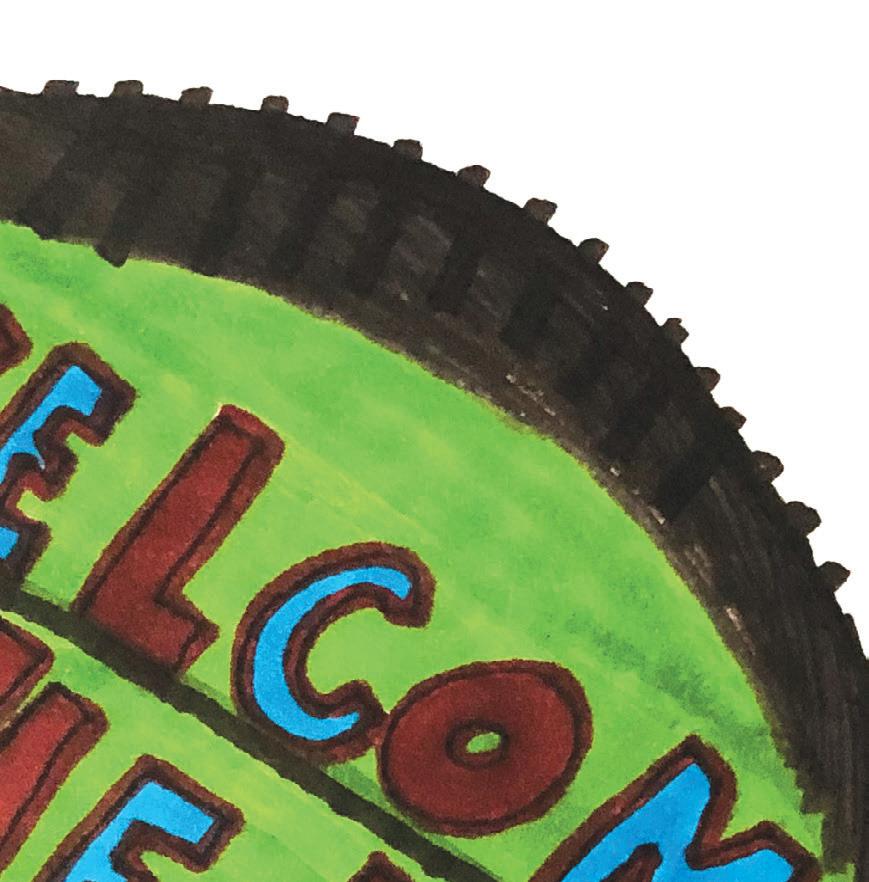
What does it take to feel safe? Often if you don't feel safe, you can't get help until you've already been hurt, raped or stabbed. Why is it that they send you to somewhere to get help you and then you go there and they’re supposed to help you and give you something to keep you safe, but in the long run they don’t help you at all? They tell you there’s nothing they can do for you. Because the person you are trying to get a protection order against hasn’t hurt you yet. Why is it that a woman
has to be raped or sexually assaulted to get help? Why is it a woman has to be threatened or harassed, or a man has to stalk a woman for her to get help? A lot of times women die before they're able to get help. Why does it have to come to that so a woman can get help? By the time someone does decide to help you you’re already dead, and then it is too late. So what does it take to feel safe in Nashville? If you’d like to write in and let me know, I’ll answer you in the paper, editorial@thecontributor.org.
To respect one's mother or one's wife or one’s sister, we must look at the land that we live on, which is just as valuable to our living as the female human species. Matter of fact they are so identical that it is unbelievable. They both give the human make-up of life to all of the human beings. They cater to the required needs of each and every living being as if we are their own at times. They both deal with emotional breakdowns and remain firm through the situations. They both cry out in pain but find that comfort zone to bear circumstances. They reproduce and feed theirs. They even go through cycles. To revere the wombs that bore us is a highly
given command. Sometimes we ask how to deal with them when difficult circumstances arise that we know nothing about. They refuse to allow the mending process to be dictated by us after they have been damaged. But we must understand that there are signs that need to be read because most of the time the womb itself cannot be totally damaged only scared. The wombs will heal themselves in time it's just how you treat the wombs. Are you constantly striving to damage the womb or are you nurturing it back to a healthy state? It's all about our honor and respects towards cherishing what our Almighty God has given us — the wombs that bore us.
Many days, I awake and just think about how in many ways life for me is troubled on every side. No matter which way I turn, there’s trouble. The apostle Paul said in 2 Corinthians 4:8-10, “We are troubled on every side, yet not distressed; we are perplexed, but not in despair; persecuted but not forsaken; cast down, but not destroyed. Always bearing about in the body the dying of the Lord Jesus, that the life also of
Jesus might be made manifest in our body.”
Even though life is troubled, I’m not in distress because this is what Jesus died for — he wants us to lay it on him. Keep right on serving, no worries. He loves us just that much. Whatever happens around us, we must keep our eyes on the cross. This is how he’s made manifest in our bodies. Even though we live in sin sometimes, we must die daily and keep our eyes on him .
Years before I started with The Contributor, in my days when I loved to smoke weed, I had been clean for some time and I had the urge to smoke one night after work. I was headed in the projects to score and as I was about to cross the street when I heard a voice — my father’s voice, who had been dead for 25-30 years, call out my name, “Charlie.” I backed up and sat on the bus bench. I knew right away it was a message
from God telling me don’t do what I was about to do. After gunshots were fired exactly from the spot I was headed, I sat and thought about how much God loves his children to even warn them of possible death. Since then it changed my life dramatically. Things that make you go, ummmm. From that day forward, I started to share his word with others. Still sharing today. Great example of how his love changes things.
There’s blossoms on the azalea bushes this week. I’m only pointing it out, Taurus, because next week there might not be. Things like this pop up for a moment and we enjoy them and then they’re gone. So sure, there might be better flowers coming and there may be some that you’ve missed already, but this week be sure to enjoy the flowers that are here right now.

When you’re an amateur astrologer, you can’t just call-in sick. Of course, you’re still allowed to get sick. And nobody even seems too worried about it. I just mean that there’s not really anybody to call. There’s not, like, a Central Office of Amateur Astrologers that keeps up with how we’re all doing. Which, come to think of it, might be why a lot of amateur astrologers report feeling underappreciated in the workplace. What I’m getting at here, Gemini, is that this is a great week to tell somebody that you missed them when they weren’t around.
One way or another, everybody has a mother. Well, unless you’re a single-celled bacterium who reproduces through fission. For a cell that splits into two identical cells, it would be hard to determine which cell is the mother and which is the child. There was one and now there are two. Are they siblings or are they the co-parents of one another? I guess bacterium also don’t usually read their horoscope. So I feel safe in asking you, Cancer, to meditate for a moment on what gifts you received from your mother, even if it’s only the multicellular body you’re living in.

I think I’ve heard this song before, Leo. Oh, that’s right! It was the last time I called this number for help and they put me on hold for 45 minutes. This time I’m up to an hour and fifteen! But I really don’t mind waiting, as long as the song is catchy. You’re waiting on some big things right now too, Leo. But what are you doing in the meantime? Even if it’s just listening to a catchy meandering saxophone ditty, try to appreciate what you’ve got going on right now. Because any minute, somebody’s gonna pick up the other end and this part of your life will be over.
When my dentist points at the X-ray on the screen he uses words to describe me that no one else uses. He points at various teeth, calling them “number 6” and “number 17” instead of just “this tooth” and “that tooth.” He says “interproximal” and “impacted” instead of just “in between” or “sideways.” Unlike my dentist, Virgo, I can’t see inside your head. So I don’t always know what you mean when you say what you’re feeling. But don’t just try once and then give up on being heard. See if you can think of another way to say it.

I’m not much of a handyperson, Libra, so I’m always really impressed when people tell me they’ve learned to replace their transmission by watching videos on YouTube. I’m less impressed when people tell me they’ve learned to perform their own appendectomy from a website that sells discount medical supplies. Some-


times, Libra, your powerful do-it-yourself attitude is your greatest strength. Sometimes you need to go to an expert.
Who are you saying thank you to, Scorpio? Your bank teller? Your barista? The bassoonist who held the elevator door? That’s great! Keep saying thank you to all those people. But I want you to add one or two more to the list. Who would be surprised to hear you say thanks? Who made a bigger difference than you knew at the time? Who taught you something that you never forgot? Say thanks to a couple of those people this week, too.
When I was a kid, I loved class field trips to the planetarium. What an incredible thing to see the sky lit up and explained! What a wonder to learn the names of things I hadn’t known before. It made looking up in the dark more exciting than it had ever been. I grew up and for some reason, I thought that meant I could stop learning. Isn’t that strange, Sagittarius? As if we know enough already. As if we ever could. What could you seek out this week that would make your world a little bigger? Not because you have to and not because it’s your job. Just because you can.
The narwhal is such an unlikely animal. Who would think up a whale with a single 8-foot-long spiralling tusk? And yet, there they are. Swimming around like a rotund legless unicorn of the sea. Sometimes, Capricorn, you put things together and they just make sense. Sometimes they don’t make any sense, but they still work anyway. Keep an eye out for those unlikely combinations this week.
You may have heard from ’90s thriller movies that you have to wait 24 hours after someone has disappeared before you can fi le a missing persons report. Th is is false. In fact, the sooner the missing person is reported, the better. However, Aquarius, if you notice that you’re sitting alone in the dark watching prestige television for hours on end and not answering texts or calls, you may be the missing person. Don’t report yourself. Just text us back and come hang out sometime.

Sometimes they get you on the shipping. Sure, it’s a great deal on a barely-used complete seven-volume set of Dr. Wayne Conundra’s How to Read Skies and Influence People. But the shipping? That’s more than the whole set costs brand new. This is why you’ve got to read the fine print, Pisces. You’re in the middle of some big decisions and I just hope you’ll consider all the costs before you push “Complete Transaction.”
So it looks like it’s time for you to pound the pavement. I’ve never loved that expression because it sounds so futile. The pavement can put up with just about any degree of pounding. At least until you involve heavy machinery. Th is is a reminder, Aries, to do your best to leave the pavement intact and instead focus on getting yourself into the new situation that you’ve spent so much time getting ready for.


Walk into any library and meet with two categories of materials: fiction and nonfiction. Open up the Bible and encounter the same. In the former category would be parables (Matthew chapter 13), and, in the latter, history (Genesis through Nehemiah in the Old Testament, Matthew through Acts in the New) which is the bulk of the volume. One of the unique things about the Bible is that it is the only holy book of a major world religion which is primarily historical. Dozens of its characters are also mentioned in other Middle Eastern / Mediterranean authors, inscriptions etc.
Among other things, some Bible authors were excellent writers by any standard. No Steinbeck ever exceeded the suspense and human interest of the Joseph story in Genesis, the Saul-David-Jonathan intrigues in Samuel, or the Elijah vs Jezebel episode which takes up 1/3 of the books of Kings. No Dickinson or Frost surpasses the poetry of Isaiah or of some of the Psalms. For sci-fi, the last book, Revelation, is hard to beat.
Such a wide range of writing is in keeping with the Bible’s own self-description as “literature” (or, if one wants to speak Latin for the same word, scriptura, from which comes our word “scripture”). To distinguish between itself and other writings, the Bible adds a word, usually translated “holy” (Hebrew kah-
DOSH, Greek AHG-eeohs) which means simply “different” or “distinctive” per context.
Given the writing range of its various authors, the reader should be prepared for various genres (and combinations thereof) in many places. One such is the early chapters of Genesis. The author touches upon the perennial curiosities of people—cosmology (verse one), astronomy (v. 16), biology (vv. 11-12, 20-30), botany (vv. 11-12, 29-30), zoology (vv. 20-23), paleontology (chapter 10), and especially anthropology (1:26-28). The narrative is “typical” history—behavioral science—about the whole human race. The word “Adam” means, in fact, “human being,” and it is the translator’s decision when to render it so and at what point to render “man” or make it a name. Adam is everybody.
After every creation “day” (of what length?), including that of people, “God saw that it was good.” The problem is that people don’t always act good. As the poem by Henry Wadsworth Longfellow goes:
There was a little girl, she had a little curl Right in the middle of her forehead. And when she was good, she was very, very good, And when she was bad, she was horrid.
Genesis is well aware of the problem and sets the stage for the “story” (a good
neutral word which neither affirms nor denies historicity) by placing a peculiar tree in the spotlight of the garden. Humans, unlike animals, have choices about whether to follow the instruction about eating from the tree of right and wrong. “Don’t,” says God. The setting is childhood. Bad choices make bad problems.
Enter the snake. God’s instruction is simple: “Do it and die.” The snake’s specialty is to entice with too much information—“Take a second look” at forbidden things. The couple presume upon God’s prerogative to determine right and wrong. They listen to the wrong voice, grow up quick, go hide, put on clothes and get put out. Allowing for various genres as the story proceeds, avoids irrelevant questions such as, “Where did Cain get his wife?”
Another curious book is Jonah (2 Kings 14:25) which puzzles commentators as to what the book is about (though, ironically, any Sunday school child can tell you). The book compares what Jonah cares about in his little “me, me, me” world, with what God cares about which is a bit bigger picture. As in Genesis, God cares about plants (Jonah 3:6), animals (2:1; 3:7-8, 11) and people (1:5; 3:5, 11). The book is also full of ironies — the people of Nineveh (Assyrians) do what 300 years of prophets couldn’t
get Israel to do. Some books of the Bible build up to a crescendo with a punch line and abrupt ending. Malachi ends with a curse. Mark ends with people being afraid.
Jonah is one of these. The whale gets the bulk of attention (which, ironically in a book promoting a wider horizon, is used by some on one extreme as a test of orthodoxy [“Do you believe in the whale”], and, on the other, by those who stand back in self-appointed sophistication with suspicion because they can’t quite bring themselves to swallow the whale story).
A different animal creation, however, shows up twice — once in response to Jonah’s brief sermon (3:7-8), and again as the last word in the book (King James Version). God provides for those on his assignment, as he did when he told the Jews to get out of Egypt and go into the desert. If you get thirsty, speak to the rock. If you are hungry, look around at the quail and wafers. So with Jonah. Jerusalem is not cattle country, but across the Jordan and on the way to Nineveh, the Bashan / Golan Heights area is renowned for such. So, Jonah, had you paid attention and gone the right direction to start with, you could have stopped in at the Bashan Roadhouse Café and had a rare fillet mignon. So it is with the reader: Remember the whale but don’t forget to milk the cows.
I’ve often wanted to create a guide for those going through homelessness. A whatto-do kind of guide for those entering the horror called homelessness with the goal of obtaining housing (most likely, years later).
Nashville already has what I call the Homeless Bible: the Where To Go In Nashville book tells you every place for food, housing, medical and even dental care, but how do you get through the system and obtain housing— the real solution for ending homelessness?
I use to turn to the housing section of the Where to Turn in Nashville resource guide first and start thumbing through the options. I was quickly turned off by the application fees of affordable housing complexes knowing full well I’d be turned down because of the evictions I had under my belt. After seeing many friends experience homeless -
ness and experiencing it for myself, I’ve come to realize that there is no one way to go through homelessness. Some become homeless after addiction, prison, eviction, domestic abuse, a break up, divorce or the loss of a job. So what's the proven way to end homelessness? Well, affordable housing is the solution to ending homelessness.
Recently news feeds have been exploding with fancy graphs and all kinds of research filled with numbers. This just burns my buns. Billions are spent by federal and local governments to find a solution to the ever increasing population of homelessness. Government officials, research groups and consulting firms paid for with your tax dollars to find out the status of homelessness and the best way to solve the problem. Let me save the government billions of dollars, it’s not getting any
better. The problem has been ignored for so many years that it’s now a national epidemic. Just look at homelessness in California. I have many friends out there I’ve met through the Internet and the horror stories are heartbreaking. All you have to do is open your eyes and you’ll see the same thing on any given day here in Nashville. Yes we smile and are thankful for everything, but when I’m alone I cry. I cry that the solution is so easy and yet so far. With more than 100 people dying on the streets every year just in Nashville it’s been a crisis that’s been long ignored. Yes Mayor Briley is aggressive with his new approach to affordable housing but that’s over a period of 10 years and something must be done now. I’ve seen a slight increase of MDHA waiting lists opening up, but is this because of shooting deaths or other situations? The answer is as
different as the reasons one became homeless. With another homeless encampment being bulldozed to make way for the NFL draft it doesn’t sound like a the city is working well with people expereincing homelessness. I’ve always thought it rather comical that only rarely are homeless individuals on any board that deals with homelessness from Nashville to DC. How can someone sitting behind a desk all day staring at pretty graphs and data solve the homeless crisis when the only answer is housing? How can the homeless situation be properly addressed if no one on the board or in the office for that matter ever experienced homelessness? Are we becoming political pawns in the upcoming election? I guess we’ll see but, in the meantime please continue to help the homeless in Nashville and the surrounding cities. It still is takes a village.




